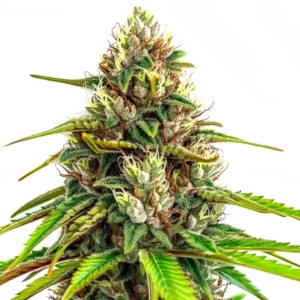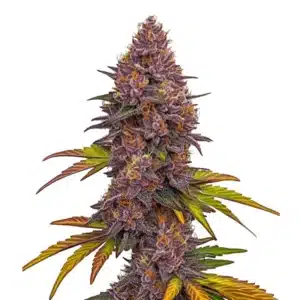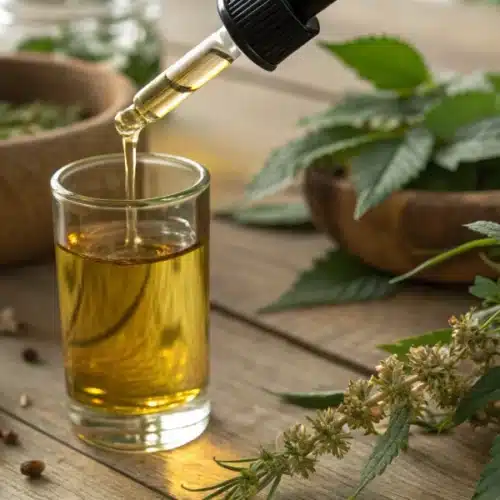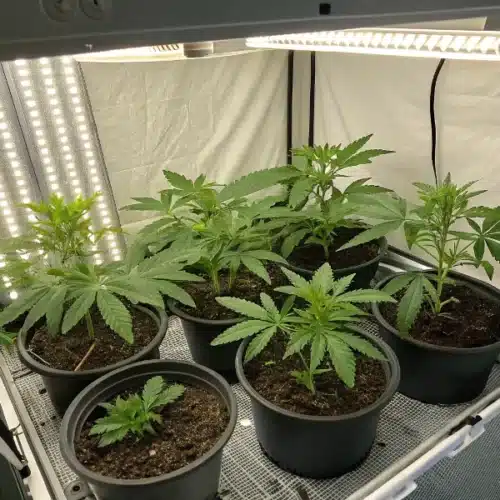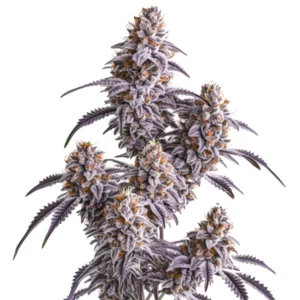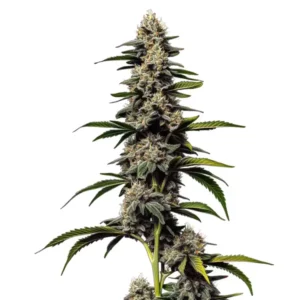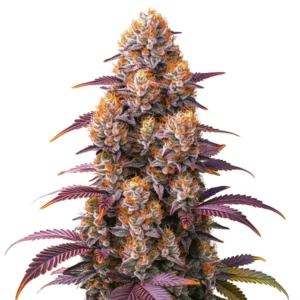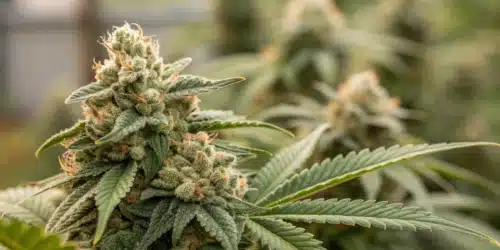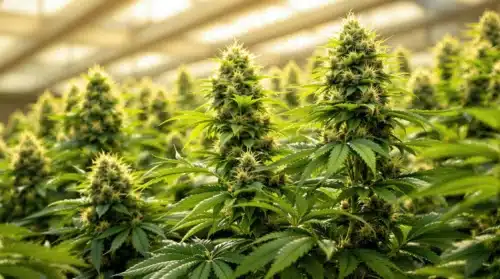Lemon Pie OG Strain Description
Original Lemon Pie Strain is a cannabis variety that has captured the attention of growers and cannabis enthusiasts alike due to its remarkable combination of flavors, aromas, and effects. As a cross between Skunk #1, Amnesia Haze, and a secret hybrid, Lemon Pie OG offers a balanced experience that appeals to both recreational and medicinal users.
Recommended Strains
Original Lemon Pie
 THC: 18 - 22%
THC: 18 - 22% Type of seed: Feminized
Type of seed: Feminized Phenotype: Mostly Sativa
Phenotype: Mostly Sativa Day to flower: 8 - 10 weeks
Day to flower: 8 - 10 weeks
This strain is known for its predominantly sativa genetics, which makes it ideal for users seeking an energetic and uplifting experience. The buds typically exhibit bright green hues, often with orange pistils and a generous coating of sticky trichomes, creating an eye-catching and aromatic masterpiece. With THC levels ranging from 18% to 22%, Lemon Pie OG delivers potent effects that range from a burst of creativity to a relaxed state of euphoria.
The aroma and flavor profile of Lemon Pie OG Strain is one of its most distinctive features. It boasts a citrusy scent complemented by hints of lemon and pine, making it a treat for the senses. Its terpene profile includes Alpha-Pinene, Beta-Pinene, Borneol, and Caryophyllene, which all contribute to its uniquely refreshing and complex flavor. These terpenes not only enhance the sensory experience but also add therapeutic properties, making Lemon Pie OG a versatile choice for both wellness and leisure.
Promos & Deals
Environmental Requirements for Growing Lemon Pie OG
Creating the right environment for growing Lemon Pie OG Strain is essential for achieving optimal results. Given its sativa-leaning genetics, this strain prefers a temperate climate, with daytime temperatures ranging between 70-80°F (21-27°C) and slightly cooler temperatures at night. Maintaining a stable climate helps prevent stress and avoids potential problems like mold or mildew, which can affect the plant’s health.
When growing indoors, it’s crucial to provide high-quality lighting, either through LED grow lights or HPS lamps, to support healthy photosynthesis. During the vegetative stage, Lemon Pie OG benefits from a light schedule of 18-20 hours of light per day. For the flowering stage, transition to 12 hours of light and 12 hours of uninterrupted darkness. The plants will respond with vigorous growth, eventually leading to dense, resinous buds.
For outdoor cultivation, Lemon Pie OG Seeds thrives in warm, sunny climates with plenty of natural sunlight. If you live in an area prone to colder weather, consider using a greenhouse to protect the plants from low temperatures and extend the growing season. Ensuring the right environment is crucial to unlock the strain’s full potential, maximizing both yield and cannabinoid content.
Setting Up The Growing Cannabis Space
Indoor Cannabis Cultivation
To grow Lemon Pie OG Strain indoors, choose a grow tent or dedicated grow space that provides adequate ventilation and sufficient room for plants to expand vertically. Installing an efficient exhaust system with a carbon filter helps maintain fresh airflow and control strong odors. Reflective materials like Mylar are recommended to improve light distribution, ensuring every leaf and bud gets enough exposure.
As for the growing medium, Lemon Pie OG responds well to high-quality organic soil or a well-maintained hydroponic system. When growing in soil, ensure that the medium is well-draining to avoid waterlogging, which can stress the roots. Maintaining a balanced pH level of 6.0-6.5 is also essential for optimal nutrient uptake. Providing these conditions will allow your plants to flourish, ensuring robust growth throughout the vegetative and flowering phases.
Outdoor Cannabis Cultivation
When cultivating Lemon Pie OG Strain outdoors, select a spot that receives ample direct sunlight for most of the day. This strain loves the sun, and plenty of natural light will encourage its growth and improve the potency of the buds. The soil should be well-draining and rich in organic matter. You might consider using large pots or fabric containers to control soil quality effectively and support root health.
Staking or using trellises is beneficial for this strain, especially since Lemon Pie OG produces dense buds that can weigh down the branches. Proper support ensures the plant can grow vigorously without risking broken branches. In addition, make sure to protect your plants from strong winds and extreme weather conditions that could damage their structure.
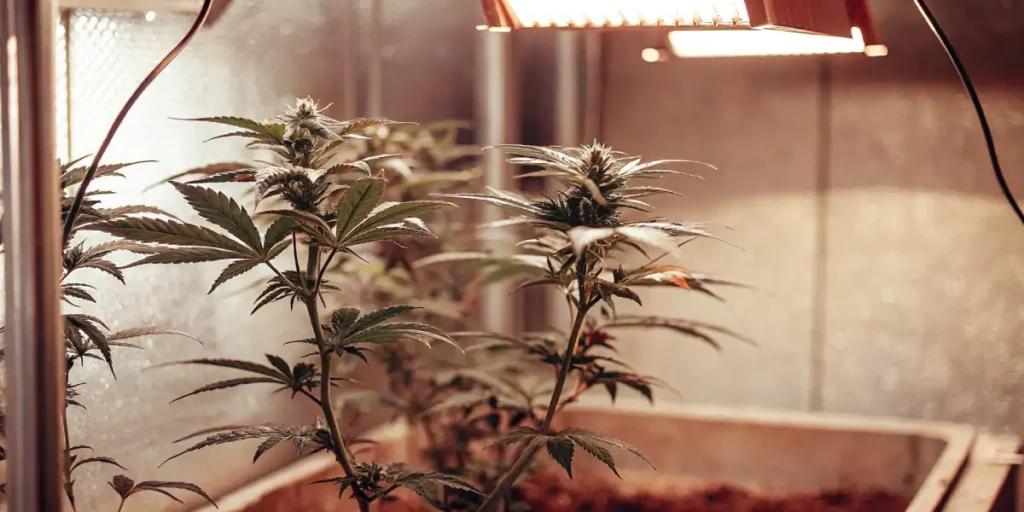
Propagation and Germination of Lemon Pie OG
Successful propagation and germination set the foundation for a healthy crop. Start by sourcing high-quality Lemon Pie OG seeds from a reputable seed bank. The germination process begins with soaking the seeds in distilled water or wrapping them in a damp paper towel for 24-48 hours. During this period, it’s important to keep the seeds in a warm, dark space at temperatures between 70-85°F (21-29°C).
Once the seeds develop a taproot, carefully transfer them to a well-draining growing medium, such as a seedling tray or small pots filled with light, airy soil. Maintain a temperature of around 75-80°F (24-27°C) and a humidity level between 60-70%. During the initial germination phase, provide indirect light and gradually increase intensity as the seedlings establish themselves. Proper germination practices help ensure that your plants develop a strong root system, which is vital for their subsequent growth phases.
Vegetative Phase of Lemon Pie OG Seeds
The vegetative phase is critical for establishing a strong foundation. Lemon Pie OG requires a stable environment with 18-20 hours of light each day. LED grow lights or HPS lamps are ideal for providing the necessary intensity and spectrum. During this phase, focus on providing a balanced nutrient solution with a higher nitrogen content to promote leaf and stem development.
Watering should be done when the top inch of soil feels dry. Overwatering is a common mistake that can lead to root rot, so it’s important to allow the soil to dry slightly between sessions. Training techniques like low-stress training (LST) or topping can be used to create an even canopy, which helps with light penetration and maximizes the number of bud sites. Pruning the lower leaves and branches that receive little light also improves airflow, reducing the risk of mold.
Flowering Phase of Lemon Pie OG Strain
When transitioning to the flowering phase, change the light cycle to 12 hours of light and 12 hours of uninterrupted darkness. This triggers the plant to start producing buds. Lemon Pie OG Strain has a flowering time of approximately 8-10 weeks, depending on environmental conditions and the phenotype. During this period, the plant will focus its energy on bud production, so transitioning to a bloom-specific nutrient formula with higher phosphorus and potassium is crucial for optimal bud development.
Temperature should be kept slightly lower during flowering, ideally between 65-75°F (18-24°C), while humidity should be reduced to around 40-50% to prevent mold. Providing adequate support with stakes or trellises is also important, as the buds grow dense and heavy. Monitoring trichome development will help you determine the ideal harvest window, ensuring you capture the best cannabinoid and terpene profiles.
Cannabis Fertilization and Nutrition
Nutrition plays a pivotal role in the growth and yield of Lemon Pie OG Seeds. Choose a high-quality cannabis-specific fertilizer that contains all necessary macro and micronutrients. A nutrient line rich in nitrogen, phosphorus, and potassium is vital for different growth phases—nitrogen is needed during the vegetative stage, while phosphorus and potassium are crucial during flowering to support bud formation and resin production.
Supplements such as beneficial microbes or bloom boosters can be added to the feeding schedule to enhance growth further. Be careful with nutrient concentrations, and always start with a lower dosage, gradually increasing it as your plants adjust. During the final two weeks before harvest, flush the plants with pure water to remove any excess nutrients, which will improve the taste and smoothness of the final product.
Pest and Disease Control for Cannabis Growing
While Lemon Pie OG Strain is relatively resilient, it can still fall victim to pests and diseases. Preventive measures are the best way to keep your plants healthy. Regular inspections for pests like spider mites or aphids, and maintaining cleanliness within the grow space, are essential practices. Introducing beneficial insects, like ladybugs, can help control pests naturally.
If pest problems do arise, opt for organic insecticides or neem oil as a safe alternative to chemical treatments. For fungal issues such as powdery mildew, ensure proper ventilation, and consider applying fungicidal sprays if necessary. Acting promptly when any sign of disease appears can prevent more severe infestations and ensure that your Lemon Pie OG plants remain healthy throughout their lifecycle.
Harvesting and Curing for Cannabis Growing
Knowing when to harvest is crucial for achieving the best potency and flavor. Trichome maturity is a key indicator—harvest when they are milky white, with some amber trichomes present. Cut the branches carefully and hang them upside down in a cool, dark space with a temperature of 60-70°F (15-21°C) and humidity at 50-60%. The drying process typically takes between 7-14 days.
Once dried, buds should be placed in airtight glass jars for curing. Store the jars in a cool, dark place, opening them daily for the first week to release moisture. Proper curing, which can take up to 4 weeks or longer, enhances the flavor and smoothness, resulting in a top-quality end product.
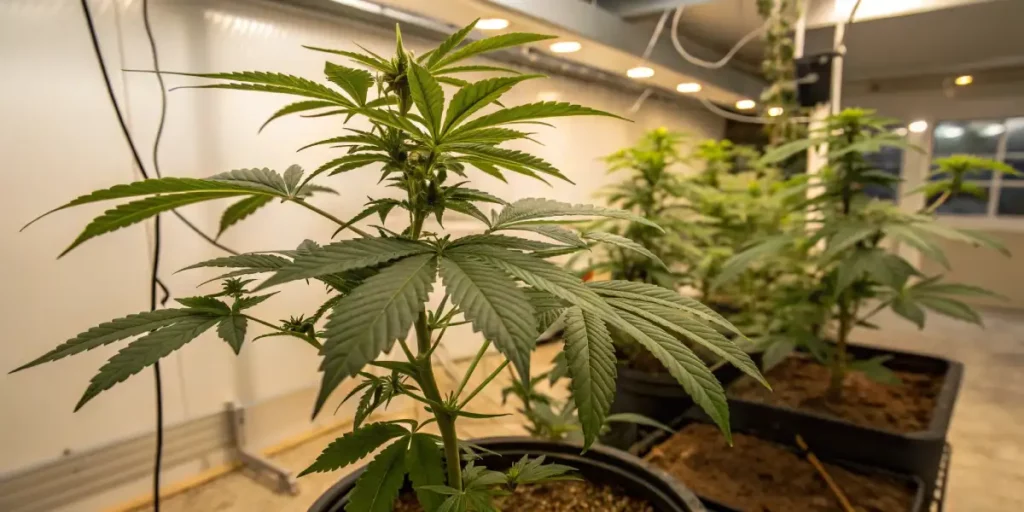
Is Lemon Pie OG Strain Indica or Sativa?
Lemon Pie OG is a mostly sativa strain, which means its effects tend to be more uplifting and cerebral. Users often report feelings of increased creativity, energy, and euphoria. Despite its sativa dominance, Lemon Pie OG also provides a subtle relaxing effect, making it versatile for both daytime and evening use. This balanced combination of effects is part of what makes Lemon Pie OG a popular choice among those seeking both recreational enjoyment and therapeutic relief.
Advantages of Growing Lemon Pie OG Strain
- Produces high-quality, aromatic buds with a citrusy flavor profile.
- High THC content between 18-22% ensures potent effects.
- Relatively short flowering time of 8-10 weeks.
- Resistant to common pests and diseases, making it beginner-friendly.
- Suitable for both indoor and outdoor cultivation.
- Yields buds with uplifting and creative effects, perfect for daytime use.
Disadvantages of Growing Lemon Pie OG Strain
- Requires regular monitoring to maintain stable environmental conditions.
- Can produce a strong odor during flowering, necessitating odor control measures.
- May require support for branches due to dense bud production.
- Sativa genetics can lead to taller plants, which may require training for height control.
Why Buy Lemon Pie OG Strain
Lemon Pie OG Strain is a versatile strain that caters to both recreational and medicinal users. With its unique citrus and lemon flavors, it provides an enjoyable smoking or vaping experience. The balanced effects—uplifting yet relaxing make it suitable for social activities, creative pursuits, or unwinding after a long day. Medicinally, it can help relieve symptoms of stress, fatigue, and muscle spasms. For growers, Lemon Pie OG is relatively easy to cultivate and offers generous yields of potent buds, making it an attractive option for all experience levels.
Problems in Cultivating Lemon Pie OG Strain
Growing Lemon Pie Weed may come with some challenges. Nutrient imbalances can lead to deficiencies or toxicities, so it’s important to monitor the plants closely and adjust the feeding regimen accordingly. This strain also produces a strong odor, particularly during flowering, which might require the use of carbon filters to control the smell. Additionally, sativa-dominant genetics mean taller growth, necessitating training techniques to prevent height issues in indoor grows.
Similar Strains to Lemon Pie OG
- Amnesia Haze: Known for its citrusy flavors and uplifting effects, Amnesia Haze shares similar genetic lineage with Lemon Pie OG.
- Super Lemon Haze: Another sativa-dominant strain with potent lemon flavors, providing a similarly energetic and euphoric high.
- Lemon Skunk: This strain offers comparable citrusy notes and is ideal for those who enjoy Lemon Pie OG’s refreshing flavor profile.
Tips for Professional Growers
Professional growers looking to maximize the yield and potency of Lemon Pie OG should focus on training techniques such as topping and scrogging (Screen of Green). These methods help create an even canopy, ensuring uniform light distribution and enhancing bud production. Monitoring pH and EC levels closely during both vegetative and flowering phases is crucial for achieving maximum nutrient absorption.
Using high-quality bloom boosters during the flowering phase can significantly improve resin production, leading to more potent buds. Additionally, professionals should consider the use of CO2 supplementation to boost growth rates and increase yield. Precise environmental control, including temperature and humidity adjustments, will also help in producing top-quality flowers with optimal terpene profiles.
FAQs
What are the effects of Lemon Pie OG?
This strain typically provides uplifting, energetic effects that are accompanied by a subtle sense of relaxation, making it ideal for daytime use.
How long does it take to grow Lemon Pie OG?
The average flowering time for the strainis between 8 to 10 weeks, depending on growing conditions and phenotype.
Is Lemon Pie OG suitable for beginners?
Yes, this strain is relatively easy to grow and has good resistance to common pests and diseases, making it suitable for novice cultivators.
What flavors can I expect from Lemon Pie OG?
The strain is known for its distinct citrus and lemon flavors, with underlying hints of pine and sweetness.
Can Lemon Pie OG be grown both indoors and outdoors?
Yes, this strain is adaptable to both indoor and outdoor environments, provided the conditions are well-managed to support its growth requirements.



